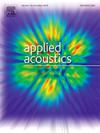Design and analysis of a novel quantum-classical hybrid neural network for environmental sound classification
IF 3.4
2区 物理与天体物理
Q1 ACOUSTICS
引用次数: 0
Abstract
In the field of Environmental Sound Classification (ESC), traditional deep learning methods face significant challenges in processing high-dimensional audio data. In response, this study innovatively proposes a quantum-classical hybrid neural network model—St-HQCNN. This model adeptly integrates the advantages of quantum superposition and quantum entanglement, which are fundamental to quantum computing, thereby significantly enhancing the model's ability to recognize and process complex sound data with greater robustness. Through the design of carefully crafted quantum circuits and misalignment reading mechanisms, St-HQCNN not only demonstrates outstanding classification performance on benchmark datasets such as UrbanSound8K, ESC-10, and ESC-50, achieving accuracy rates of 97.14%, 99.38%, and 93.75%, respectively, but also highlights the tremendous potential of quantum-enhanced neural networks in sound recognition tasks. The experimental results clearly reveal the substantial promise of quantum-assisted neural networks in this domain, laying the foundation for future research and practical applications. This study not only showcases the theoretical innovations of St-HQCNN but also focuses on its feasibility for real-world applications. Moving forward, we aim to explore the scalability of the model, address challenges in practical deployment, and advance the widespread use of quantum neural networks in the field of machine learning.
求助全文
约1分钟内获得全文
求助全文
来源期刊

Applied Acoustics
物理-声学
CiteScore
7.40
自引率
11.80%
发文量
618
审稿时长
7.5 months
期刊介绍:
Since its launch in 1968, Applied Acoustics has been publishing high quality research papers providing state-of-the-art coverage of research findings for engineers and scientists involved in applications of acoustics in the widest sense.
Applied Acoustics looks not only at recent developments in the understanding of acoustics but also at ways of exploiting that understanding. The Journal aims to encourage the exchange of practical experience through publication and in so doing creates a fund of technological information that can be used for solving related problems. The presentation of information in graphical or tabular form is especially encouraged. If a report of a mathematical development is a necessary part of a paper it is important to ensure that it is there only as an integral part of a practical solution to a problem and is supported by data. Applied Acoustics encourages the exchange of practical experience in the following ways: • Complete Papers • Short Technical Notes • Review Articles; and thereby provides a wealth of technological information that can be used to solve related problems.
Manuscripts that address all fields of applications of acoustics ranging from medicine and NDT to the environment and buildings are welcome.
 求助内容:
求助内容: 应助结果提醒方式:
应助结果提醒方式:


